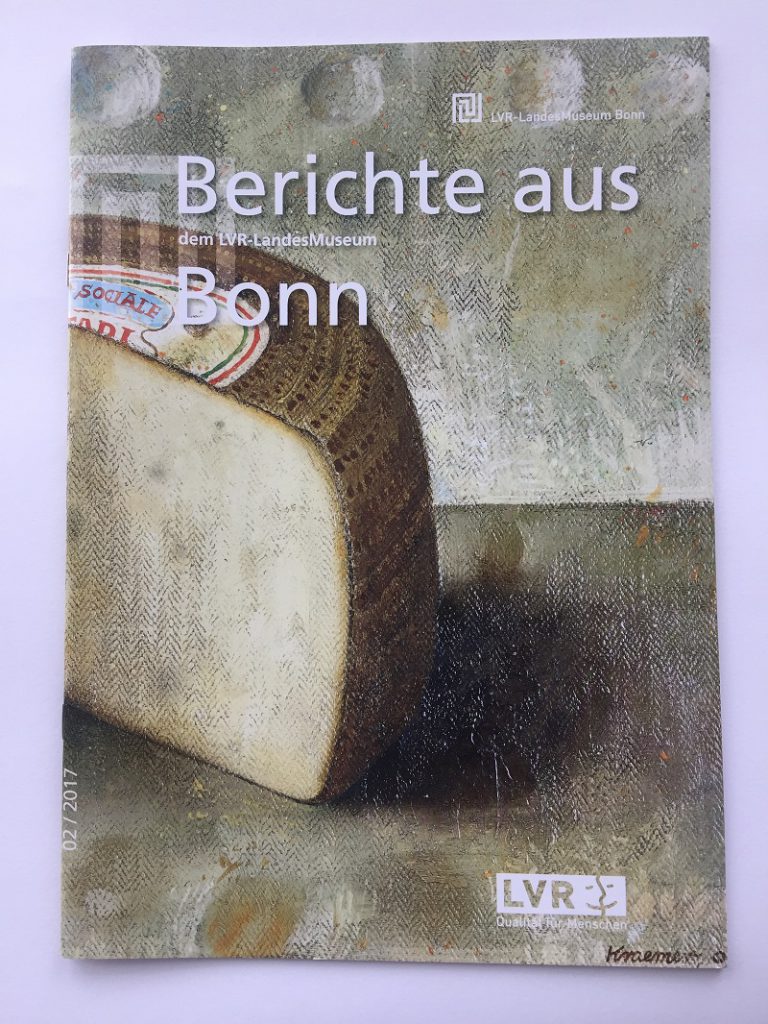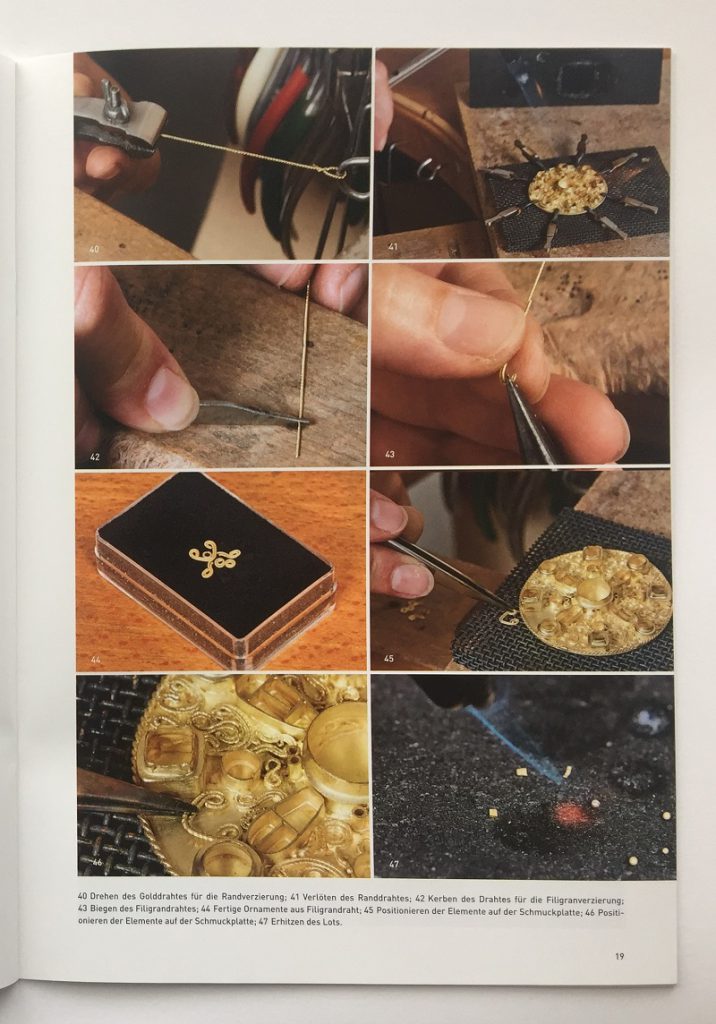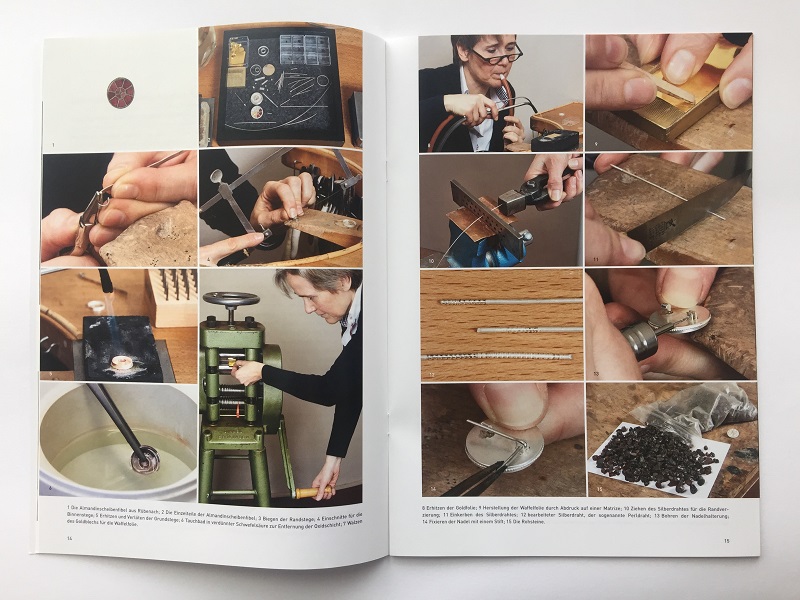At the end of 2015, an art historian from the LVR LandesMuseum Bonn contacted me with the desire to make a gold disc fibula and a replica of a precious gemstone fibula for the exhibition "Eva's Beauty Case" planned for June 2016 and to document the entire production process in detail at the same time.
The documentation material obtained in this way was to be used to equip a display case with a goldsmith's workplace in the above exhibition and to show museum visitors a film in the background about the manufacturing steps of a medieval cloak clasp (disk brooch).
In addition, an extensive, 8-page scientific article on the creation of such a magnificent primer should be published in the museum magazine "Reports from the LVR LandesMuseum Bonn".

During the spring of 2016, employees of the LVR LandesMuseum Bonn were guests in my studio on several occasions whenever there was exciting progress in the production of the two gold brooches. Then a professional photographer took detailed pictures of the various processing steps and asked me for all the details in an interview.

This extremely exciting and shared time with the employees of the Bonn Museum and the professionalism of the approach to the scientifically sound creation of such a documentation will always remain in my memory as a very special highlight in my professional career to date.
For example, I was able to gain a very precise insight into the preparation of a larger exhibition and sniff a lot of the wonderful and mysterious 😉 “museum air”.
I will always remember the intensive time working with the "museum professionals" with great gratitude and I am very proud that I was able to participate in such a publication.

